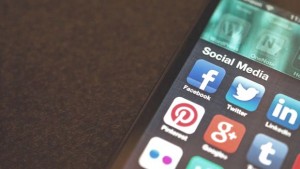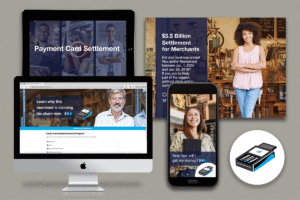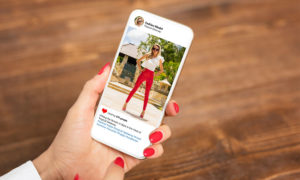How many times did you check your favorite social media channels today? I’m willing to bet it’s definitely more than one, and if you’re anything like the average person, it’s probably more around 14 – and that’s just Facebook. Even if you haven’t reached the point of constant connection, social media is a big part of everyday life.
In the professional world, social media is a great resource for info gathering. Most of us are on at least a network or two, and given the time we spend on said networks, we leave a trail of facts and tidbits about ourselves that can be useful for taking care of business. Competitors can suss each other out, business development pros can track and connect with leads, fashion influencers can gauge the style tendencies of the season – the list goes on. It’s stalking, really. I don’t mean this in the literal, creepy sense, of course; it’s a jargon-y terms that explains how we employ Twitter and the like to learn about the people around us.
In PR specifically, social media is an invaluable tool when it comes to connecting with members of the media and building strong relationships. While excellent for tracking down specific contacts, media databases like Vocus and Cision don’t always give us the robust and ongoing information on journalists their own social channels can. Social media is also a fantastic way to talk with consumers and efficiently manage communications – any good PR strategy should include social media presence, after all. Social Media Today reports that between 2012 and 2013, brands using social media to respond to customers increased by 143%, and 71% of consumers are likely to view a brand in a positive light and recommend it to peers when they receive satisfactory communication through social media. With that in mind, platforms like Twitter – definitely the holy grail of making media connections – are indispensable resources in a successful PR pro’s box of tricks. Here are a few key best practices to keep in mind:
- Spot trends: Twitter has easy trends to follow on its sidebars, which can be tailored to your city, the location of key influencers– wherever you’d like. However, that’s just the beginning when it comes to your ability to track trends and current events on the network – plus, the “suggested” trends are often dominated by non sequitur topics. Follow news organizations from hyperlocal to international, sync up with journalists you’ve worked with or have collaborated with in the past, connect with fellow publicists and look to movers in shakers in industries relevant to your clients – these people will be on their game when it comes to current events that matter to you.
Once armed with this information, think about how you can pull together a creative and impactful pitch that piggybacks on current events and will be all the more likely to catch a journalist’s eye. Is a writer at a big fitness publication talking about gluten-free foods that actually taste great? Did the health food brand you work with just roll out a new line of GF treats? Bingo.
- Make friends: Journalists are people, and people are more likely to work with others they know and trust. So, use Twitter to “make friends” with media people you’d like to collaborate with. Understand who they are, what interests them both inside and outside of work, what they like to write about, and even their “voice.” Engage with their content and ask questions – genuinely, of course. Don’t pretend you’re an expert on nuclear fusion because you want a writer to cover something in Scientific America.
- Do your research: Continuing on the trend spotting component of Twitter, it’s important for PR pros to have a handle on what’s going on in the world. However, PR being an extremely busy profession by nature, it can be hard to stay on top of news. Twitter is perfect for quick updates – its snackable content gets to the point, and if something piques your interest, you can choose to take additional time to read more.
- “Listen” and learn: Targeted “social listening,” or monitoring social channels for topics that relate to your industry, is a great way to track sentiment. Social listening can help you out when:
- You’re dealing with a cool launch, a big announcement or a crisis comms situation. It’s a quick and direct path to connecting with the consumers talking about your brand or product. Simply type a search term, or better yet, a hashtag, in your Twitter search box and voila – hundreds of conversations at your fingertips. From there, you can plan responses and next steps, build a social sentiment report, or plan for a follow-up campaign.
- You’re running a social media campaign or contest with a special hashtag, this will give you an easy rundown of how quickly the Twitterverse is picking up on your content.
- You’re trying to build a quality follower base. Use social listening to find conversations that make sense to become engaged in – give opinions, retweet good points, and ask your community for their input. As like-minded users see you sharing their content, it’s likely they’ll return the favor somewhere down the line and earn you a new follower. For more advanced brands, this is a great way to find brand advocates – bloggers, industry leaders, and the like. If a conversation takes off or they tweet something that indicates they’re the perfect match for a brand or product, a publicist can take that cue and make a connection outside of social media.
PR pros, how else do you use Twitter and other social networks to enhance your skills and effectiveness?














 Grant Wright
Grant Wright Corie Fiebiger
Corie Fiebiger
 Shae Geary
Shae Geary Phelan Riessen
Phelan Riessen Katrina Early
Katrina Early Hamish Marshall
Hamish Marshall
1 Comment
I simply want to say I am very new to blogs and certainly enjoyed you’re web site. Most likely I’m likely to bookmark your blog post . You really have outstanding article content. Kudos for sharing your web site.